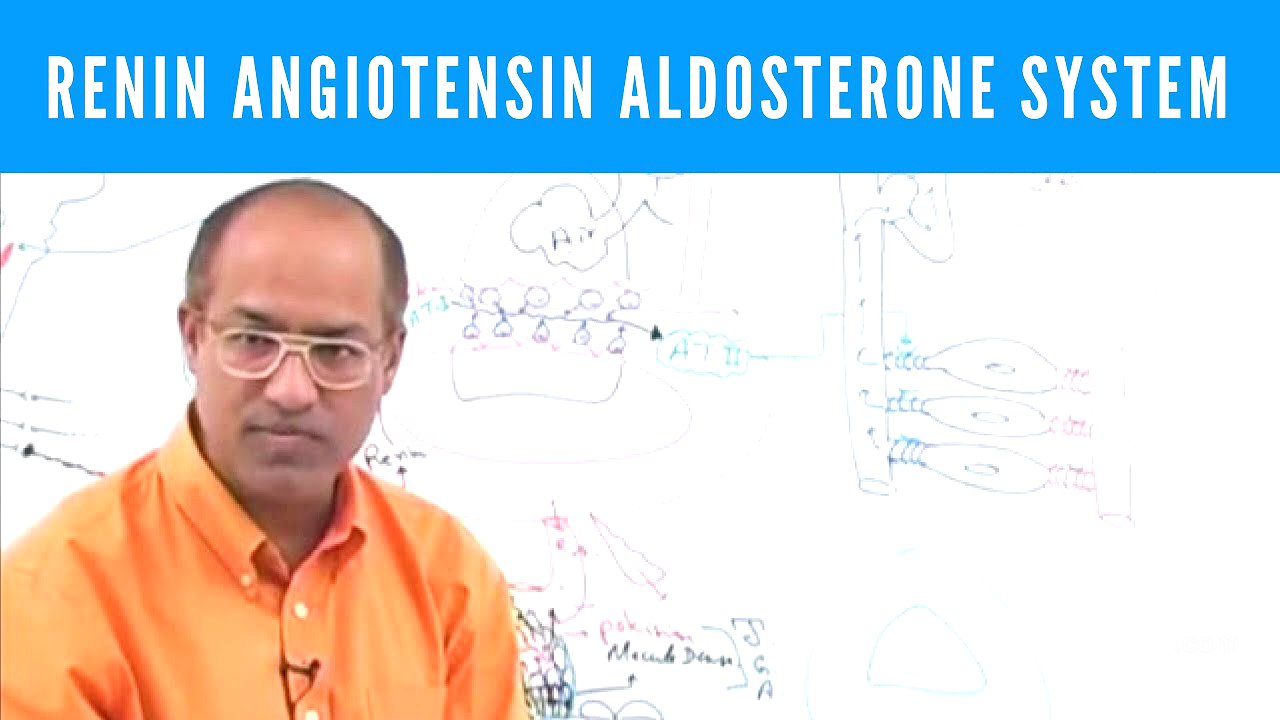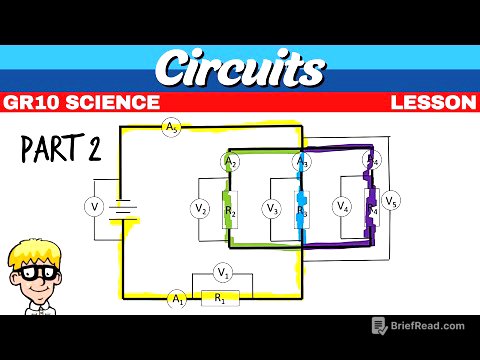TLDR;
This lecture explains the Renin-Angiotensin-Aldosterone System (RAAS), a crucial physiological mechanism for blood pressure regulation. It details how the system responds to decreased blood pressure, such as during hemorrhage, by activating a cascade of hormonal actions to restore blood volume and pressure. The lecture covers renin production, the roles of angiotensin II and aldosterone, and the pathological functions of RAAS in conditions like congestive heart failure.
- RAAS maintains blood pressure and volume.
- Renin release is triggered by low renal perfusion and sympathetic stimulation.
- Angiotensin II and aldosterone act to increase blood pressure and volume through vasoconstriction, sodium and water retention.
Explanation of RAAS with the help of a case of haemorrhage [0:00]
The Renin-Angiotensin-Aldosterone System (RAAS) is a vital physiological system primarily responsible for regulating blood pressure. The lecture begins by illustrating how RAAS is activated in response to a drop in blood pressure, such as during a hemorrhage. The system's primary function is to maintain blood volume and pressure within the vascular system. Key organs involved include the central nervous system (for sympathetic outflow), kidneys (for renin production), liver, pulmonary circulatory system, and adrenal cortex.
Renin production in detail [3:42]
The lecture explains the detailed mechanism of renin production within the kidneys. Each kidney contains approximately 1.2 million nephrons, each equipped with a specialized apparatus to monitor blood flow. As the afferent arteriole approaches the glomerulus, its smooth muscles transform into specialized baroreceptors, forming the juxtaglomerular apparatus. When blood flow to the nephron decreases, these modified smooth muscles release renin into the bloodstream.
Low Renal Perfusion leads to low Glomerular Filtration [13:53]
The lecture continues describing that when blood flow decreases, glomerular filtration also reduces. The reduced flow allows nephron cells to reabsorb more sodium, leading to less sodium reaching the macula densa. The macula densa, a group of specialized cells in the distal convoluted tubule, senses the low sodium levels and stimulates the juxtaglomerular cells to release more renin. This mechanism ensures renin release is augmented under both pressure and sodium changes.
External or Systemic Mechanism of Renin Production [17:05]
The lecture describes that when blood pressure decreases, the carotid sinus is activated, signaling the central nervous system. This triggers sympathetic outflow, stimulating sympathetic fibers connected to the juxtaglomerular apparatus. These fibers release norepinephrine, which stimulates beta-1 adrenergic receptors on the juxtaglomerular cells, further promoting renin release. Thus, renin release is influenced by intrarenal mechanisms (pressure and sodium changes) and extrarenal mechanisms (sympathetic nervous system).
Function of Renin [22:02]
The lecture explains that renin, once released into the general circulation, acts on angiotensinogen, a protein produced by the liver. Renin converts angiotensinogen into angiotensin I. Angiotensin I then passes through the lungs, where angiotensin-converting enzyme (ACE), present on the endothelial cells of pulmonary capillaries, converts it into angiotensin II. ACE also inactivates bradykinin, a vasodilator.
Actions of Angiotensin II [31:30]
Angiotensin II acts on various parts of the circulatory system to increase blood pressure and volume. It constricts venous smooth muscle, increasing venous return to the heart and raising cardiac output, which elevates systolic blood pressure. Angiotensin II also constricts arterial smooth muscle, reducing blood flow from the arterial to the venous side, thereby increasing diastolic blood pressure.
Action of Aldosterone [39:34]
Angiotensin II stimulates the zona glomerulosa cells in the adrenal cortex to release aldosterone. Aldosterone acts on principal cells in the distal convoluted tubules and collecting ducts of the nephron. It enhances sodium reabsorption by increasing the production of sodium-potassium ATPases on the basolateral membrane and sodium channels on the luminal membrane. This leads to increased water reabsorption and potassium secretion, increasing blood volume and systolic blood pressure.
Angiotensin II action in CNS [46:19]
Angiotensin II acts on the hypothalamus in the central nervous system, stimulating the supraoptic nuclei and leading to the release of antidiuretic hormone (ADH) from the posterior pituitary. ADH increases water reabsorption in the last part of the nephron, further increasing blood volume and blood pressure. Angiotensin II also stimulates the sympathetic nervous system, increasing central sympathetic outflow, stimulating sympathetic ganglia, and enhancing norepinephrine release while reducing its reuptake.
Pathological functions of RAAS [53:21]
In conditions like congestive heart failure, chronically low blood flow to the kidneys leads to chronic activation of RAAS and sympathetic stimulation. Chronically elevated angiotensin II and aldosterone levels can cause pathological changes in the myocardium, leading to cardiac remodeling. This involves myocardial cell hypertrophy, increased production of extracellular matrix, and fibrosis, ultimately worsening cardiac function. Drugs that inhibit angiotensin-converting enzyme or block angiotensin II receptors are crucial in managing these conditions by preventing cardiac remodeling and reducing preload and afterload.









